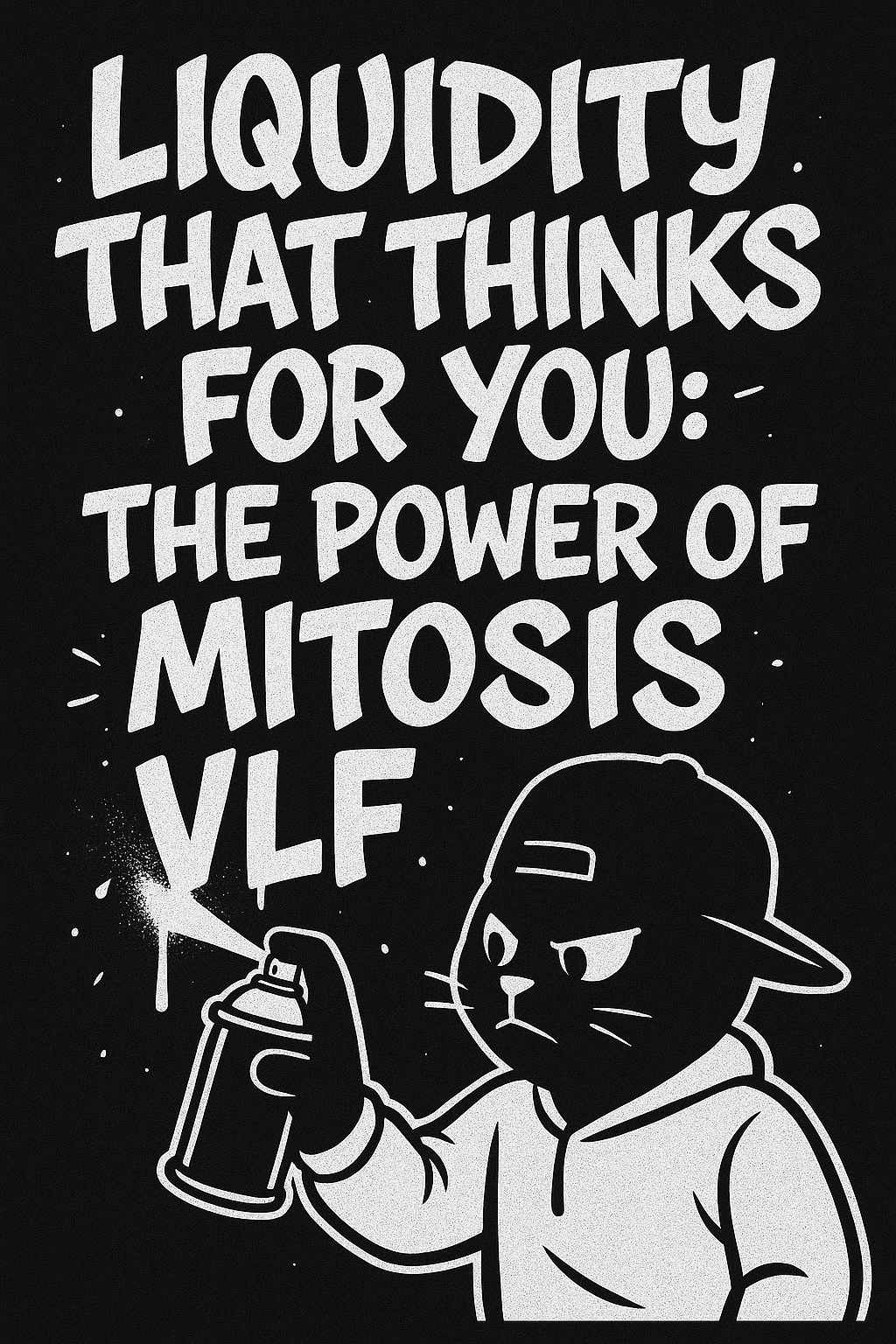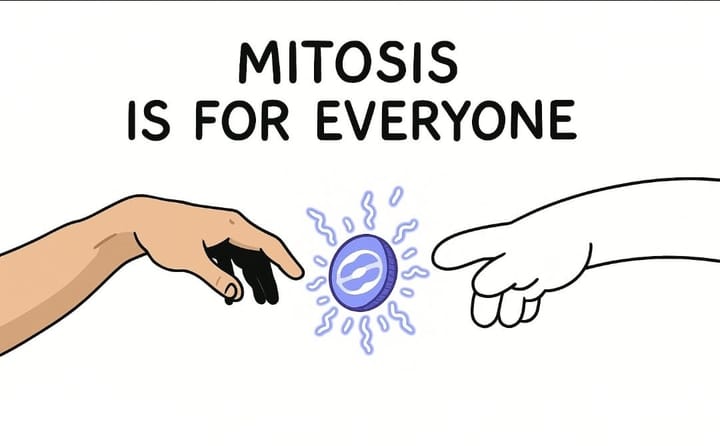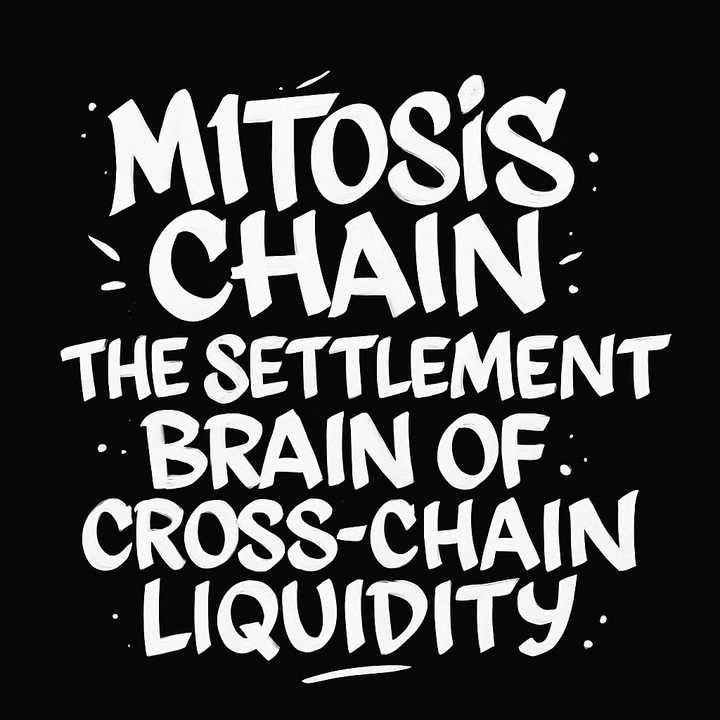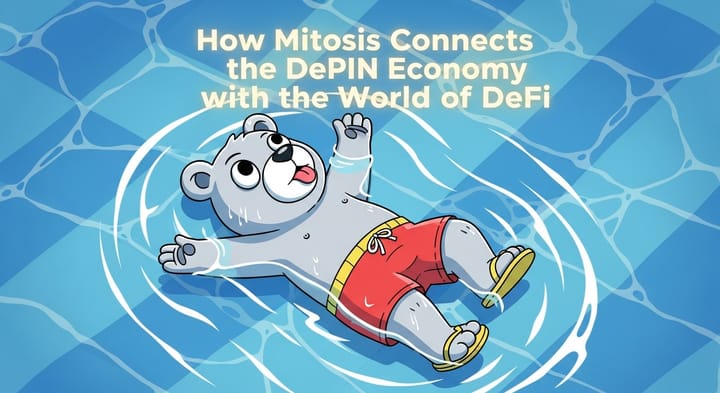Liquidity That Thinks for You: The Power of Mitosis VLF

Introduction
In nature, cell division is what keeps life growing, fluid, responsive, and adaptive.
Now imagine if your capital could behave the same way. What if your liquidity knew where to go, how to grow, and when to shift, without needing you to lift a finger.
That is the promise of Mitosis' Vault Liquidity Framework (VLF). Inspired by biology but rooted in technology, VLF is the engine that transforms passive deposits into elastic, reactive, and optimized liquidity operating across chains automatically.
But let us go beyond metaphors. Let us break down how it really works.
How VLF Works: Liquidity That Moves With Intent
At a glance, VLF feels like a smart root system. But under the hood, it is a modular liquidity framework that actively monitors, reallocates, and compounds user deposits.
Here is what VLF actually does:
- Tracks cross-chain yield opportunities in real time
- Executes rebalancing strategies that move liquidity toward high-demand protocols
- Harvests and reinvests yields, auto-compounding gains without manual input
Adjusts positions dynamically, not only for yield but also for efficiency and security
Instead of users bridging between chains, chasing APRs, or switching vaults manually, VLF uses programmable logic and a set of vault strategies to automate this entire process.
Rebalancing: Not Just Movement, But Intelligence
When one protocol (say on Arbitrum) begins to show a spike in usage, TVL growth, or farming rewards, the VLF strategy layer detects this shift. It then routes a portion of idle or less productive liquidity toward that opportunity.
This happens in real time or near real time depending on chain congestion and strategy weightings.
And if that yield dries up? VLF reallocates, pulling capital out and rerouting it elsewhere. Think of it like liquidity that does not just move. It learns where it is needed.
The power here is not just automation. It is adaptive optimization.
Compounding and Reward Stacking: Letting Capital Work Overtime
Another core value of VLF is that it does not just move capital. It maximizes it.
As yield is generated, auto-compounding mechanisms harvest rewards and reinvest them, boosting user returns exponentially over time.
But beyond base yield, Mitosis integrates extra incentives:
- Governance tokens
- Partner rewards
- Protocol-native bonuses
These get stacked on top of your yield curve, making your deposit not only profitable but strategically beneficial across the ecosystem.
In a traditional yield vault, you earn static interest.
In VLF, you earn dynamically stacked and optimized returns.
Sample Use Case (Simplified)
Let us say you deposit $5,000 USDC into Mitosis.
At first, your funds are deployed across Base and Arbitrum to capture yield on stables.
But then a new protocol on Blast offers a liquidity mining campaign.
The VLF engine detects increased demand and reroutes part of your funds to farm there early.
When rewards are earned, VLF harvests and compounds them.
You did not click anything.
You did not chase APRs.
Your liquidity just moved and grew on its own.
Why It Matters: VLF as the First Step Toward Programmable Liquidity
VLF is not just another vault system. It is the first real infrastructure piece of Mitosis' programmable liquidity vision.
Think of it this way:
- Traditional DeFi vaults are savings accounts with yield
- VLF is a liquidity engine that can learn, shift, split, and scale with your needs
What Mitosis is building goes beyond reactive farming. VLF serves as the foundation for programmable liquidity where strategies are not hard-coded but modular, upgradable, and potentially user-directed in the future.
It is about building an intelligent liquidity network that:
- Moves capital to where it is most impactful
- Adapts across different chains and ecosystems
- Learns from market signals
- Aligns incentives for both protocols and users.
This is the tech layer that makes liquidity as a living system more than just a metaphor.
The Road Ahead: From Framework to Foundation
VLF is already operational and evolving.
As more modules are added and more partners integrate (e.g., Chromo, Spindle, Hyperlane), VLF will become the core liquidity brain of Mitosis' InfoFi ecosystem.
Expect to see:
- More customizable strategies
- More integrations across chains and protocols
- Greater capital efficiency
- Smarter risk-adjusted yield allocation
Eventually, users may be able to program liquidity goals: - Max yield across stablecoins only
- Avoid Ethereum mainnet due to gas
- Only participate in partner-verified vaults.
That is true programmable liquidity. And it all begins here with VLF.
Conclusion: From Passive to Intelligent
Liquidity should do more than sit. It should think.
It should adapt.
It should evolve with the market.
Mitosis' Vault Liquidity Framework turns your capital from a static asset into a smart agent, one that flows across chains, compounds returns, and supports real DeFi growth without friction.
Your liquidity deserves to do more than wait.
With Mitosis, it finally can.



Comments ()